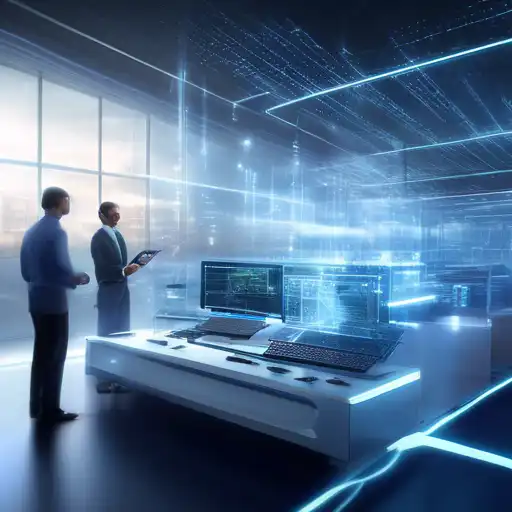Introduction to Edge Computing
In the digital age, speed and efficiency are paramount. Edge computing emerges as a transformative technology, bringing data processing closer to the source of data generation. This paradigm shift not only enhances speed but also reduces latency, making it a cornerstone for the future of Internet of Things (IoT) and real-time analytics.
What is Edge Computing?
Edge computing refers to the practice of processing data near the edge of the network, where the data is being generated, rather than relying on a centralized data-processing warehouse. This approach minimizes the distance data must travel, thereby reducing latency and bandwidth use.
Benefits of Edge Computing
The advantages of edge computing are manifold, including:
- Reduced Latency: By processing data closer to its source, edge computing significantly decreases the time it takes for data to be processed and acted upon.
- Bandwidth Savings: Transmitting large volumes of data to centralized data centers can consume significant bandwidth. Edge computing alleviates this by processing data locally.
- Enhanced Security: Distributing processing can reduce the risk of data breaches, as sensitive information doesn't need to traverse the network to a central location.
- Improved Reliability: Local processing ensures that applications remain operational even if connectivity to the central server is lost.
Edge Computing vs. Cloud Computing
While both edge computing and cloud computing play pivotal roles in the modern IT landscape, they serve different purposes. Cloud computing centralizes data processing in remote data centers, whereas edge computing decentralizes processing to be closer to the data source. This distinction is crucial for applications requiring real-time processing.
Real-World Applications of Edge Computing
Edge computing is revolutionizing industries by enabling real-time data processing. Some notable applications include:
- Smart Cities: Traffic management systems use edge computing to process data from sensors and cameras in real-time, optimizing traffic flow and reducing congestion.
- Healthcare: Wearable devices monitor patients' health metrics and process data locally to provide immediate feedback or alerts.
- Manufacturing: Edge computing facilitates predictive maintenance by analyzing data from machinery on the factory floor, preventing downtime.
Challenges and Considerations
Despite its benefits, edge computing presents challenges such as the need for robust security measures at each edge location and the complexity of managing distributed systems. Organizations must weigh these factors when integrating edge computing into their operations.
The Future of Edge Computing
As the demand for real-time processing grows, edge computing is set to become increasingly integral to technological advancements. With the proliferation of IoT devices and the advent of 5G, edge computing will play a critical role in enabling faster, more efficient data processing.
In conclusion, edge computing represents a significant leap forward in how we process and analyze data. By bringing computation closer to the data source, it offers unparalleled speed and efficiency, paving the way for innovative applications across various sectors.
